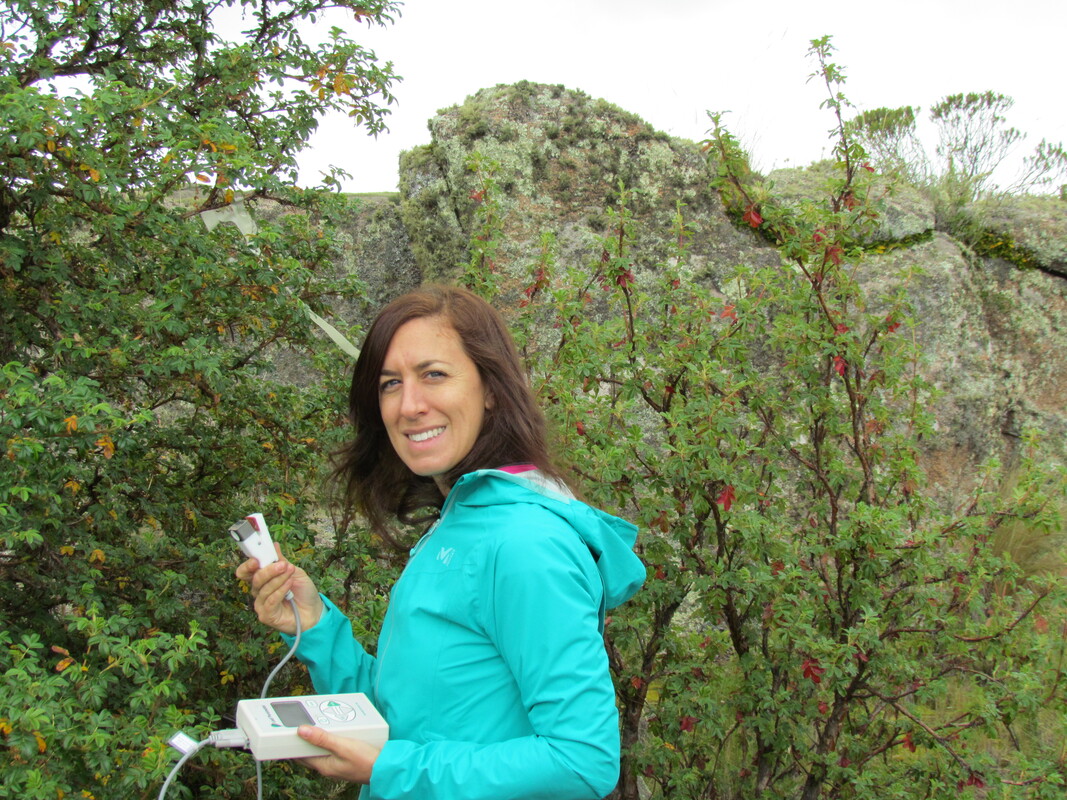Ecohydrology to me is the watery dialogue between what is alive and what is not, through spatial and temporal scales. The ‘living’ component is the biota, including humans. I really enjoy reading this section of ‘meet a leaf’ since it always offers different perspectives on what Ecohydrology ‘is’. This reflects how broad the field is, bringing together researchers, tools and backgrounds from quite different disciplines – to me one of the most fun aspects of Ecohydrology.
What are your undergraduate and graduate degrees in?
My undergraduate degree is in Biology from the National University of Córdoba, Argentina. This is a five-year program with a thesis, so is not mandatory to do a Master’s degree before getting into a PhD-program, reason why I directly went for a PhD after my undergrad. My Ph.D. is in Biological Sciences, from the same university as my undergrad. My PhD thesis was in Ecohydrology, where I aimed to understand how livestock and fire alter vegetation, soil and water dynamics at the plot scale in the highland ecosystems of central Argentina, which are a critical water source for the inhabitants, agriculture and industry of the region.
How did you arrive at working in/thinking about ecohydrology?
I grew up going frequently to the mountains and its streams, loving being outdoors, and since I was very young I wanted to be a Biologist and do plant-related field research. I chose to do my undergrad thesis on Plant Ecology, particularly on how we can scale up single species attributes such as leaf traits and litter decomposition to ecosystem-level processes. While picking up leaf litter across the highlands of central Argentina I experienced several fog events. This made me wonder and get fascinated by how relevant fog may be for plants physiology, and even more puzzling, for the hydrology of this region – although I had almost zero formal hydrological training. At that time, my undergrad thesis advisor, Ana Cingolani, was just starting a new research project on a new field (Ecohydrology) and she offered me to pursue a PhD with her in this topic, what thrilled me. Thus, I arrived to working in Ecohydrology somehow by chance, but feeling it was a completely natural step. Now my research is focused on water flowpaths, magnitudes and velocities through the ‘soil-plant-rock-stream-atmosphere’ continuum at scales that go all the way from plants in pots to catchments and subcontinents.
What do you see as an important emerging area of ecohydrology?
I can think of various, most of them with humans as the focus. One of these ‘still’ emerging areas, I would say is better understanding how humans alter the water cycle through climate, vegetation and soil changes; as well as how can we restore these components and, through them, the overall ecohydrological functioning of watersheds. Another one that is very important, and that I am also very interested in, is water provisioning services in dry regions. How subhumid-to-arid mountains sustain base flows? How land use and climate change menace (or perhaps improve) water provisioning in quantity and quality in these regions? Related to this, socioecohydrology and the ecohydrology of urban systems are also emerging areas that I believe will keep growing as cities keep attracting more and more ‘ecohydrological’ attention with their channeled streams, flooding and sewage problems, intense use of non-native trees and gardens that consume more water, among others. Probably doing so by including citizen science and approaches developed by social scientists is the way to go, and I need to learn that fast.
Do you have a favorite ecohydrology paper? Describe/explain.
So many! One of my favorites is one of my very firsts reads in Ecohydrology: Sampurno Bruijnzeel’s ‘Hydrological functions of tropical forests: not seeing the soil for the trees?’ (Agriculture, Ecosystems and Environment, 2004). This paper analyzes all evidence at the time on how land use changes altering forest cover may impact water yields in tropical regions. This is a follow up from a previous publication of his on 1989 ((De)forestation and dry season flow in the tropics: a closer look, Journal of Tropical Forest Science) that is also great. Although he focuses on tropical forests and I work on subtropical-highland ecosystems, this paper and his ‘infiltration-evapotranspiration trade-off hypothesis’ was foundational for my PhD thesis and most of the research I continued doing since then. There is still a lively debate and contradictory results regarding the underlying mechanisms of forest cover impact on streamflow. Another really good paper that was crucial for me is Heidi Asbjornsen’s and colleagues ‘Ecohydrological advances and applications in plant–water relations research: a review’ (Journal of Plant Ecology, 2011). In this paper the authors synthesize the theoretical frameworks and methodological approaches in Ecohydrology across scales, which I found very insightful as a graduate student. As a side note, I had the chance to interact with the first authors of these two papers, Sampurno and Heidi, which has been an incredibly enriching experience, scientifically and personally.
What do you do for fun (apart from ecohydrology)?
Being at the mountains, hiking, camping, traveling and photographing are the things I love the most, especially when shared with my partner. As well as visiting my family (playing with my niece and nephew is a blast!) and drinking ‘mate’ with friends - you might need to read this to understand what mate is: https://simple.wikipedia.org/wiki/Mate_(drink). I also like swimming, baking and watercolor painting.

 RSS Feed
RSS Feed